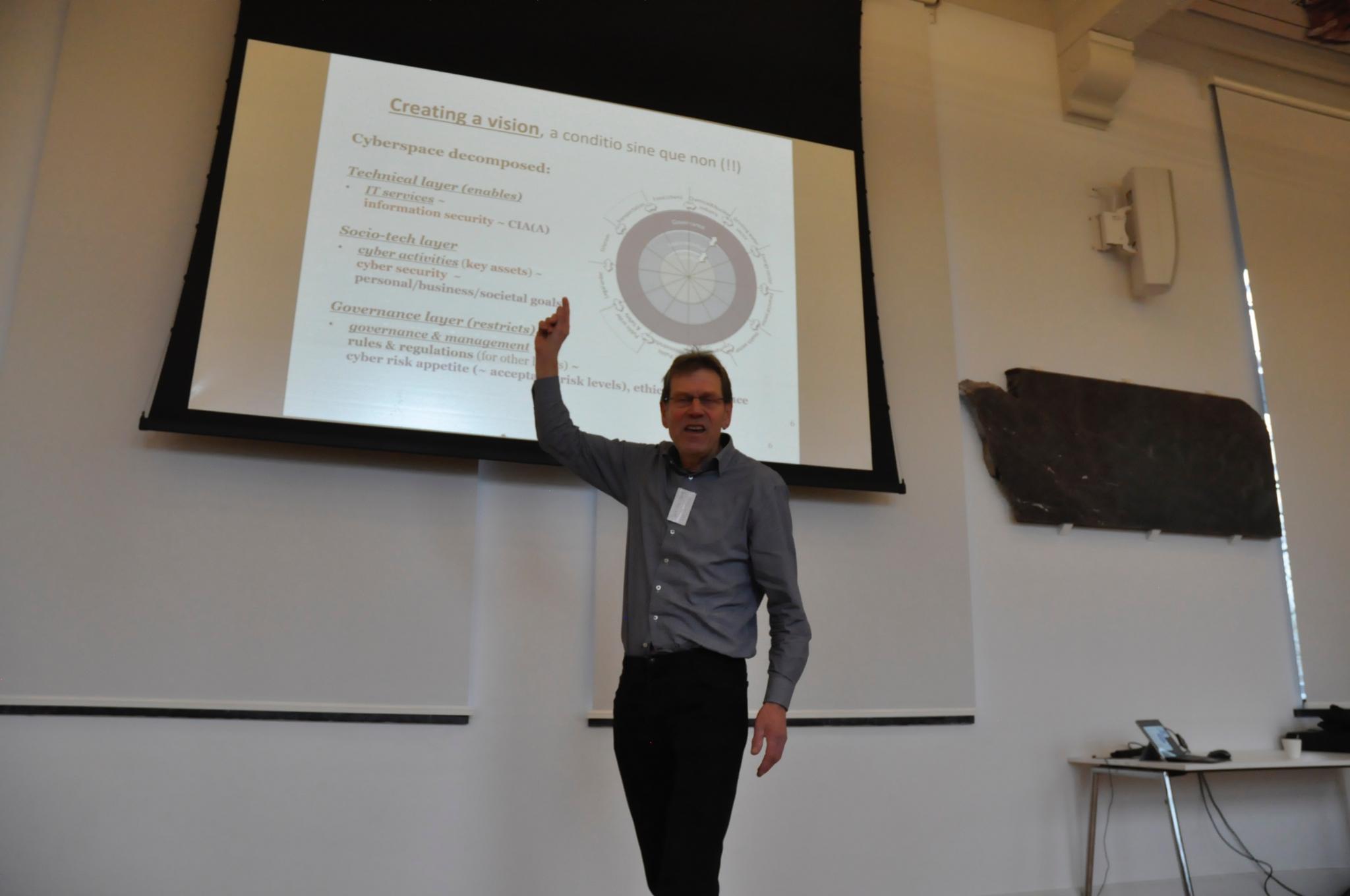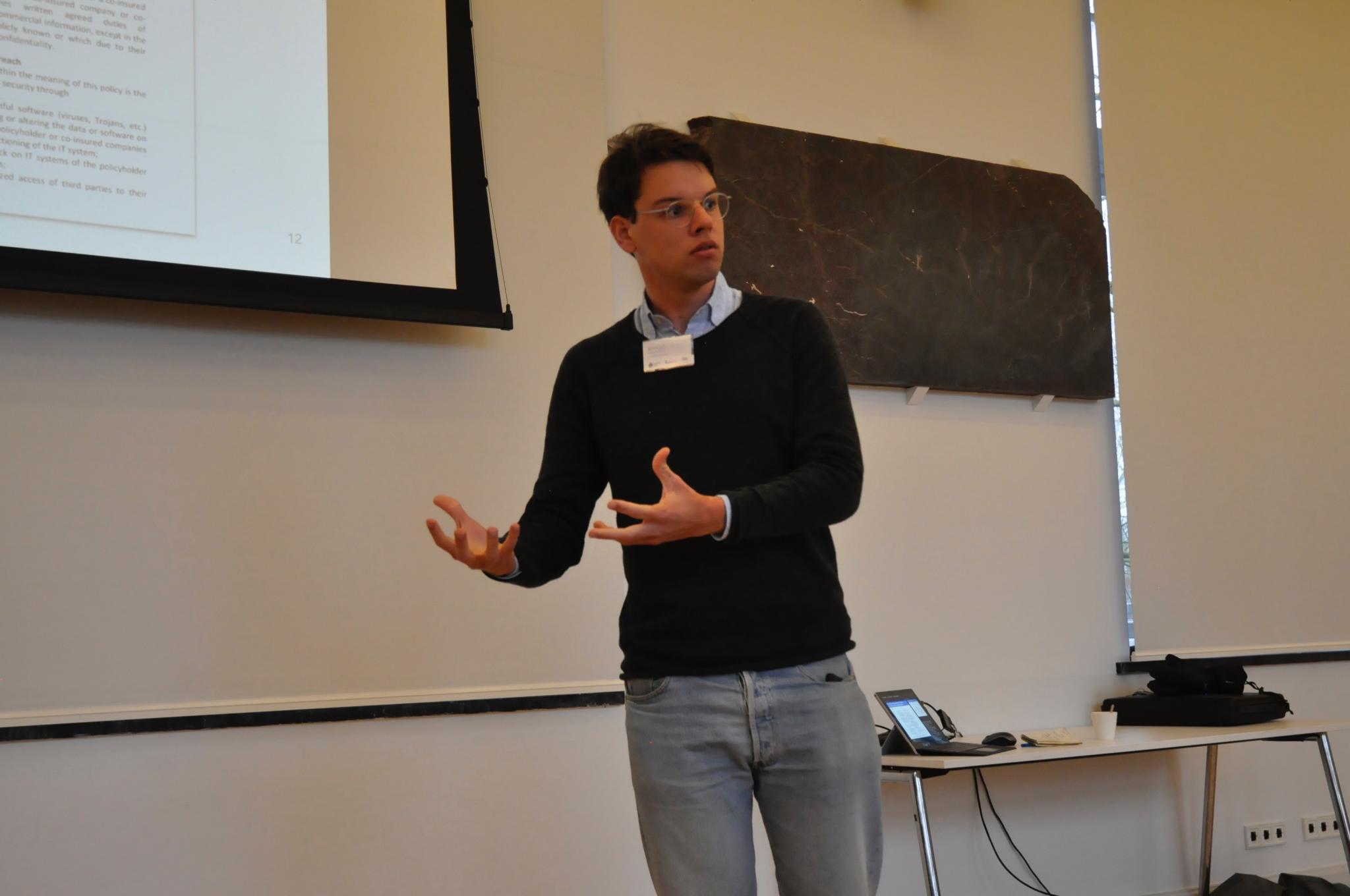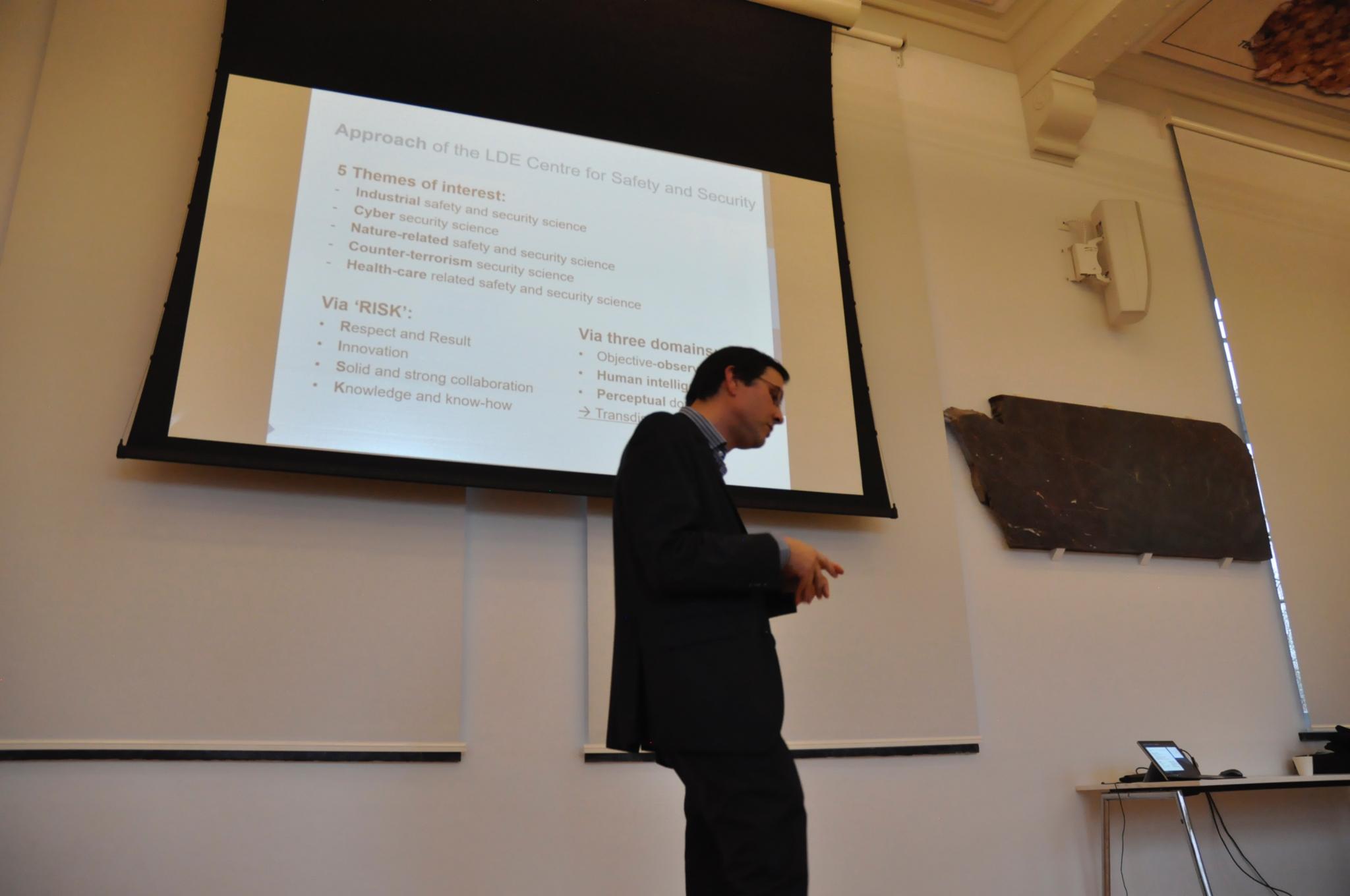On 23 January 2017, approximately 50 academics from Leiden, Delft and Rotterdam attended the Re-inventing Safety and Security symposium. Three keynote speakers shared their vision of multidisciplinary collaboration in research and education in the field of Safety and Security. The participants worked in theme groups to lay down plans for new collaborations.
‘Multidisciplinary collaboration does not happen of its own accord’

Jan van den Berg, Professor of Cybersecurity at TU Delft and Leiden University, was the first director of research of the Centre for Safety and Security. He is now also head of the Cyber Security Academy (CSA) in The Hague, a collaboration between Leiden University, TU Delft and The Hague University of Applied Sciences. The first class of professionals graduated from the Academy’s Executive Master’s degree programme on 9 February. The CSA is now viewed as a role model when developing new multidisciplinary Executive Master’s. But as they started out, the lecturers at CSA had to find their own way. Cyber Space is a new field that covers much more than just IT, explains Van den Berg: ‘There are three layers: the IT, the cyber activity and cyber governance & regulation’. The team had to devise a completely new methodology for determining and managing cyber risks. In light of today’s complex society – which is underpinned by information technology – an interdisciplinary approach is required.
Connecting worlds and keeping open minds: that is what it’s all about.
But how do you move from a series of well-meaning independent disciplines to developing such an approach? Lecturers at the CSA first convened in a workshop to answer this question themselves, before passing on their findings to their students. And if it wants to take a pioneering position in the field, this is also still the most significant challenge faced by the Centre for Safety and Security. ‘But how do you move from a series of well-meaning independent disciplines to developing such an approach? Lecturers at the CSA first convened in a workshop to answer this question themselves, before passing on their findings to their students. And if it wants to take a pioneering position in the field, this is also still the most significant challenge faced by the Centre for Safety and Security. ‘Connecting worlds and keeping open minds: that is what it’s all about’.
‘Head out and drink lots of coffee’

‘Please put up your hand if you have cyber insurance’, was how PhD student Bernold Nieuwesteeg from the Erasmus School of Law started his presentation. Nieuwesteeg was invited to introduce the Cyber Insurance project, an initiative that he devised and subsequently implemented together with André Hoogstrate (Econometrist at Leiden University) and Wolter Pieters (Security Risk Management Expert at TU Delft) using seed money provided by the Centre for Safety and Security. This was the first time that field research had been conducted into the Dutch cyber insurance market for SMEs – a sector that turns out to underestimate cyber risks. How do you go about setting up a collaborative project between academics from three universities? ‘It doesn’t happen of its own accord’, says Nieuwesteeg. But it does not always need to be very formal and official, as demonstrated by the email exchange that he recovered from his archive and displayed on a screen. Nieuwesteeg thinks that coffee bars help: ‘Head out and drink lots of coffee’.
Read the news article about the research
The Cyber Insurance project
‘Business as usual no longer cuts it’

Genserik Reniers, Professor of Safety of Hazardous Materials at TU Delft and director of research of the Centre for Safety and Security, says that a new revolution is required in our approach to safety and security. There have been two revolutions since 1900. The first of these started around 1900 in industrial and insurance circles, with the slogan ‘safety first’. The second, in the 1950s and 1960s, was of a more academic and technocratic nature, placing great emphasis on risk management models.
How can we be transparent while remaining secure?
However, Reniers argues that the age we live in demands a new revolution in how we think about safety and security. ‘Business as usual no longer cuts it’. New questions are arising nowadays, questions that extend beyond technological concerns to include social issues. For example, how do we take ethical aspects into consideration when determining risks? How can we be transparent while remaining secure? And how do we integrate physical safety and cyber safety? It is only possible to answer these questions if all social parties and scientific disciplines collaborate closely. ‘And this is an area in which the Centre for Safety and Security is keen to play a pioneering role’.
